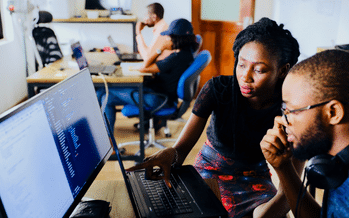Now you have a model that people can easily assess against for both upskilling in their current job and also reskilling to learn a new role (career planning and workforce agility). It will define any skill gaps and tell them exactly what learning level of activity they need to develop. It will make them self-sufficient and able to capitalize on intrinsic motivation and a growth mindset. And it tells you exactly what learning content you need to close your organizational skill gaps and position it for future success.
Read MoreIt’s time to eliminate the disparity between haves and have-nots with respect to the right skills for today’s work. If you want to ensure upskilling/reskilling equity for all, leverage technology like the Self-Directed Learning Engine™ to provide everyone with the opportunity to grow at their own pace. Those with the right skills will be able to increasingly control their destiny, choosing how, where, and when they work, while those without the required skills will not be able to envision how their circumstances will improve
Read MoreCollaborative learning has been shown to be one of the most effective types of learning. We call it “task-based mentoring” though you may call it “flash mentoring”, “peer coaching”, or “modern apprenticeship”.
Read MoreTaking advantage of task-based mentors/peer mentors (what McKinsey calls distributed apprenticeship) is key to upskilling and reskilling at scale in the flow of work.
Read MoreWith the changes going on in the world today, helping employees take ownership of their development has never been more important. We hope these help you engage employees in taking ownership of their learning.
Read MoreAs you build your competency model, you will often get a lot of pushback in terms of hard skills vs. soft skills. These skills also transcend jobs, even those that don’t currently exist. So when you are looking to both upskill and reskill, these skills matter.
Read More





